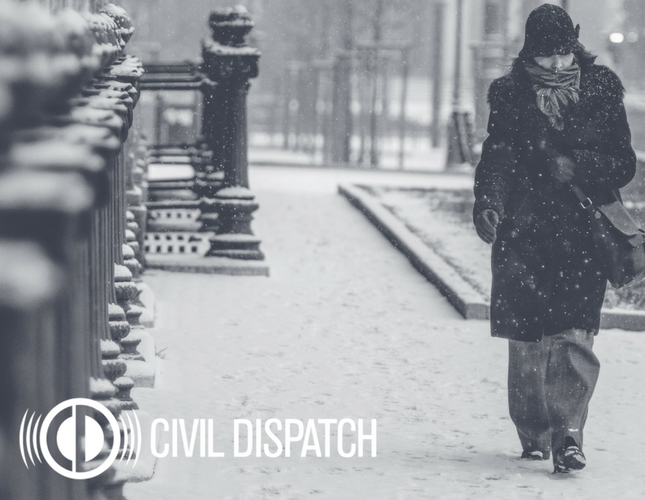
This winter, for most, has been a winter of highs and lows; and we mean that quite literally. The temperature has been all over the place for a majority of the United States and it’s never too late to get yourself and your family prepared for the next wave of cold air.
Cold Affects The Body
The first step to being prepared is knowing the signs your body is sending you. Hypothermia can be deadly if you aren’t aware that it is happening to you or anyone around you. Since hypothermia has a gradual onset and affects both your thinking and reasoning skills, it may go unnoticed.
Initial signs and symptoms to look for with hypothermia are hunger and nausea. These start subsiding as the core temperature of your body drops.
The next symptoms include:
- Confusion
- Lethargy (Lack of energy)
- Slurred speech
- Loss of consciousness
- Coma
More often than not the affected person will feel drained and want to lay down, fall asleep, and pass away. Most people start stripping themselves of their clothes before this occurs. This is called “paradoxical undressing” and occurs because the affected person has lost all rationality and their nerves are so damaged they start to get irrationally hot.
Exposure to the cold for too long can also lead to frostbite. Frostbite is caused by the formation of little ice crystals within the cells of your body, mostly your fingertips, toes, nose, and ears. Once these frost crystals are formed, they rupture the cell and cause death of the cell. Most people associate frostbite with your fingers or toes turning black and this happens when the cells die.
Getting Prepared
Having preventative measures already set up beforehand is important when fighting off the chance of getting either hypothermia or frostbite.
- Layer your clothing. Most heat is lost in the back of the neck or the top of your head so make sure you are wearing a hat and covering your neck with a scarf. Cover your fingers with gloves and put on thick socks to keep your toes warm.
- Hand warmers are a great way to increase the body temperature of your hands and feet quickly. Always keep a stack in your car or in your coat pocket for easy access.
- Crumbling up newspapers and putting them in your coat can help with insulation and extra warmth.
- Pitching a tent creates a fun element if you have kids, but it also generates more heat if everyone is sitting in close proximity to each other.
Keeping Your Home Warm
There is always that one snowstorm that hits and everyone loses power for who knows how long. While power is being restored you need to have a plan to keep the heat you do have inside until you can regain power.
- Lighting candles is wonderful for heating small areas. Carefully place lit candles throughout the house in areas where they won’t get knocked over.
- Hanging heavy quilts in doorways of rooms with heat sources can keep the heat inside that room.
- Insulating your windows with a weatherproof sealant. If your windows don’t have a sealant, you can use bubble wrap, duct tape, and/or a heavy quilt over your windows to keep the wind out.
We might think we are prepared for cold weather, especially if you live in areas that routinely experience frigid temperatures during the winter months. There is no such thing as being too prepared for cold weather even if you are just in the comfort of your own home. Make sure you have your weather notifications on for any winter weather that is coming your way.
For more tips on how to prepare your home for the winter and overall cold weather survival hacks, check out: